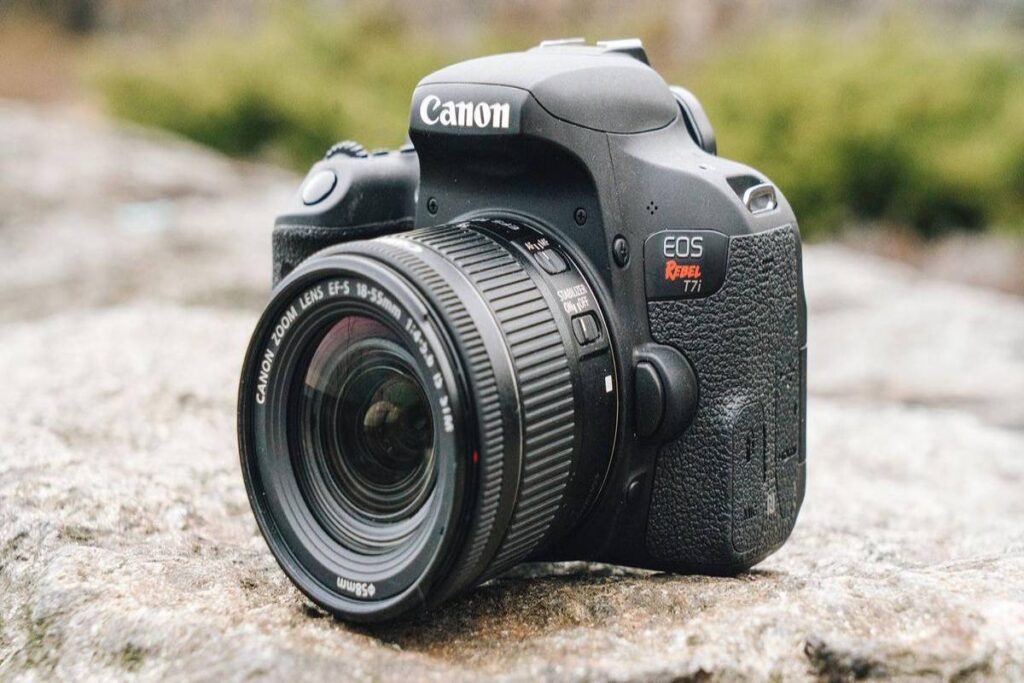We start with Canon DSLR Camera, reviewing the different types of cameras they offer, the user design, and the optics that complement them. As we know, Canon DSLR Camera is one of the traditional brands in the photographic sector. It originated in Tokyo in 1933 and was called Precision Optical Instruments Laboratory. It manufactured cameras when Japan wanted to boost its industry (especially the military).
The Canon brand has always been one of the leading players in the world of camera technology. It has established itself as a brand that amateurs and leading professionals like. One major reason for the same is the presence of canon lut on leading platforms like fix the photo. LUTs stand for Look Up Table and are a major part of professional photography. They allow you to play around with brightness, hues, colour tones and more. in other words, there is a ton of editing and personalization that you will be able to benefit from.
Table of Contents
What types of cameras do you offer?
- Canon offers a comprehensive catalog in which there are all types of cameras: SLR, mirror-less, bridge, compact, and instant (would leave out only medium and higher format).
- As you may know, Canon is currently the leader in the photography market, a position gaining mainly thanks to its DSLR models, which we can consider “stars” in its catalog.
- Regarding compact models, following the market dictates, its offer of simple models has been reduced (which have fallen a lot due to competition from mobile phones).
- Still, in return, the segment of premium or advanced compact has been strengthened.
- It offers many of the features of larger cameras in a smaller form factor.
Product Ranges: Cameras
- Canon divides its cameras into four categories: EOS SLR cameras mirror-less cameras, compact digital cameras, instant cameras, and pocket printers.
EOS SLR Cameras
- Its well-known range of EOS system reflex cameras offers models for all types of audiences.
- Although the firm divides them into three: beginners, enthusiasts, and professionals.
Cameras for Beginners
- Starting low, among the first, we have the Canon EOS 4000D and 2000D.
- It would be the most straightforward and most affordable models, with prices between 300 and 400 Euros.
- Going up a few steps, we would have the Canon EOS 250, which adds some features and a more attractive design.
- And finally, the Canon EOS 800D even more, complete and already around 700 Euros.
Enthusiast Cameras
- As for the enthusiast models, we find more advanced cameras with a more robust body, more capable sensors, better performance, and more excellent control options.
- The simplest is the Canon EOS 850D, very similar to its sister 800D.
- We could well have stayed with her in the section dedicated to newbie’s.
- The latter, by the way, is already a model with a full-frame sensor (those discussed so far were APS-C) before the Canon EOS 6D Mark II.
- It can be the most modern model and the entry-level full-frame camera for home users.
- Anyway, the most recent model in this category of cameras is the Canon EOS 90D.
- It is presented less than a year ago with quite exciting features to convince these types of users that the benefits of SLRs are still worth it.
Cameras for professionals
- Finally, its line of EOS DSLR cameras comprises full-frame models aimed at professionals.
- Whether those who dedicate to disciplines that require the highest image quality or those who, above all, need speed.
- Its flagship, the Canon EOS-1D X Mark III, is aimed at the latter, presented as the “definitive reflex” for the 2020 Olympic Games (which we hope can be in 2021).
- By the way it is replaced the EOS-1D X Mark II which is still for sale.
- Who are looking for resolution above all, we have the Canon EOS 5Ds and 5Ds R (same model with and without low-pass filter) with a 50.6-megapixel sensor.
- A little below, we would have the Canon EOS 5D MK IV.
- It would be the simplest model of this professional range.
Mirror-less cameras
- As we said, its range of mirror-less cameras began in 2012 (without much enthusiasm).
- And also, it was not until the last four years when it has expanded to currently forming a reasonably extensive system (not as much as DSLRs, yes) with two types of sensors (full-frame and APS-C).
- The most recent is its mirror-less with a full-format sensor that released the RF mount and the R system.
- At the moment, this system only consists of three cameras.
- Although, a new one already announces that it will become the standard of the system: the Canon EOS R5.
- But until it hits the market (predictably in the next few months).
- What we have are the original Canon EOS R, the EOS Ra.
- It is the same model but modifying for use in astrophotography, and the EOS RP.
Compact digital cameras
- As we mentioned, this is a segment that has been declining in recent years.
- However, Canon DSLR Camera is an excellent example of how brands can differentiate product ranges to reach particular users.
- It explains that in this line, we find four sections: Compact cameras with a large sensor.
- And also, bridge cameras, cameras with a super zoom, and point-and-shoot cameras.

